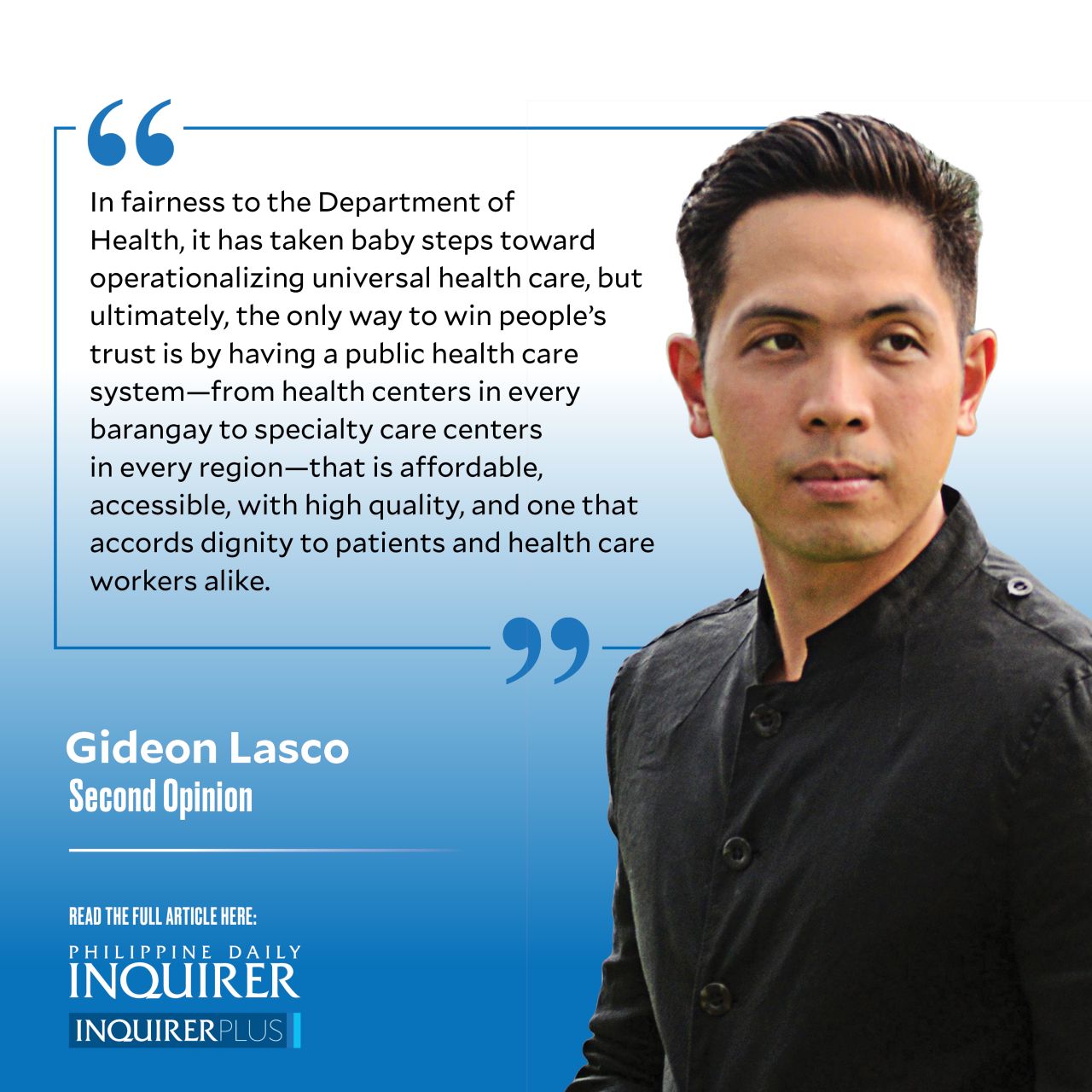From pandemic to endemic
The transition cannot be defined as a specific point in time, but we are definitely moving toward a post-pandemic phase. Mask wearing has become optional, and, in any case, largely performative. Christmas parties are back, and I was so glad to physically meet my colleagues in UP Diliman’s Department of Anthropology after over two years of Zoom meetings. Schools are finally reopening in full, and I’m looking forward to teaching Medical Anthropology face-to-face to our undergraduates next semester.
Despite fears of a surge after the long-delayed and belated school reopening and the lifting of mask mandates, COVID cases and hospital admissions have decreased over the past several months, mirroring trends in much of the world.
Article continues after this advertisementSuch hopeful signs notwithstanding, COVID-19 remains an actively circulating viral illness—one that deserves to be taken seriously, regardless of the point at which we consider the pandemic to be over. People are still acquiring it, and while most of the cases continue to be asymptomatic or mild, even a small fraction of serious ones can be significant—especially for those with comorbidities, the elderly, and the still unvaccinated. Moreover, the impacts of long COVID remain unclear, and more dangerous variants may yet emerge in the future.
On the other hand, the health and social impacts of the lockdowns are becoming even clearer, reminding us that the blunt instruments that were used to control COVID are unsustainable and, in some cases, misguided. As the Food and Nutrition Research Institute (FNRI) recently reported, four out of 10 Filipino adults are either overweight or obese, surely leading to sickness and death that will not be part of the pandemic’s statistics. Equally alarming from the FNRI report is the fact that four out of 10 Filipino children are stunted. And what of the mental health consequences of those draconian measures? While the calculus in 2020 was that it was worthwhile to sacrifice these health concerns to control a deadly, yet-unknown pandemic, today, it is no longer tenable to sacrifice other health concerns for a serious but known, manageable, vaccine-mitigatable illness.
Moving forward, there is a need to continue to pursue efforts to strengthen health capacity, and to make COVID care available to whoever might need it. The fact is, many Filipinos fear the health care system more than COVID itself (or any illness for that matter), in large part due to the fear of expenses that PhilHealth has not addressed. In fairness to the Department of Health (DOH), it has taken baby steps toward operationalizing universal health care, but ultimately, the only way to win people’s trust is by having a public health care system—from health centers in every barangay to specialty care centers in every region—that is affordable, accessible, with high quality, and one that accords dignity to patients and health care workers alike.
Article continues after this advertisementAlongside such a system, we need an enabling economic, social, and physical environment for people to pursue health lifestyles, which is why health must be on the agenda of every government agency, including the Department of Education (schools as health-promoting environments; physical activity and outdoor exposure as part of the curriculum), Department of Environment and Natural Resources (environmental health), Department of Public Works and Highways (more walkways and bike lanes!), and Department of the Interior and Local Government (basics like water and sanitation). For this reason, the collaboration of the DOH’s Health Promotion Bureau with Philippine Parks and Biodiversity to promote open green and blue spaces is a commendable step—one of many that need to be undertaken in the coming years.
Meanwhile, the vaccination campaign must continue. I do not blame the government for trying to get hold of as many vaccines as they can at a time of uncertainty and desperation, and there were undeniable—if modest—successes in our vaccination program that managed to administer over 150 million doses in 15 months. However, as the over 31 million doses of expiring vaccines and the fact that only 21 million have been boosted remind us, we can still do better, including by cooperating with our Asean neighbors to ensure supply and by actively monitoring (and addressing) people’s concerns over vaccines to increase demand.
To name just one more important step out of many, we must actively seek to learn lessons from our country’s pandemic response—both from what went wrong (e.g., face shields, contact tracing forms) and what went right (e.g., telemedicine, health promotions). Which reminds me: What happened to the Pharmally scandal, and the many other allegations of corruption that continue to plague our health care system?The pandemic may be ending, but the fight for accountability in our health care system—and for health as a right of all Filipinos—continues.
——————
glasco@inquirer.com.ph

















